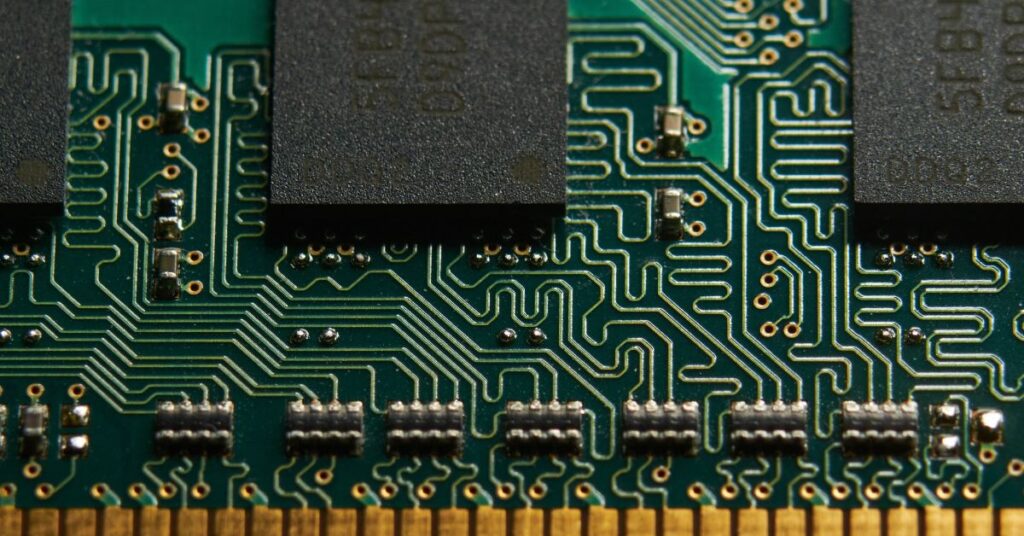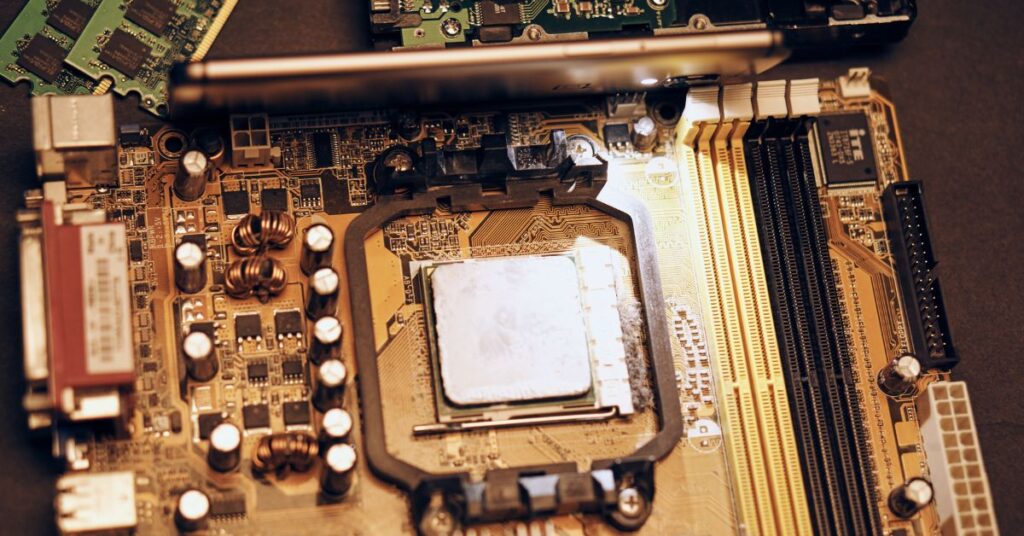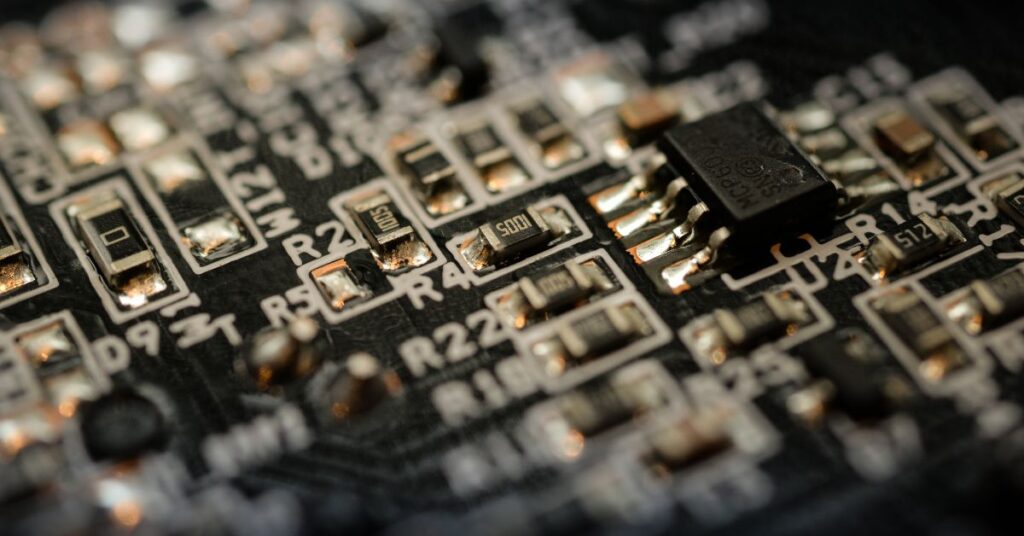Welcome to a playful exploration of a question that might have crossed your mind: Why motherboard is not a fatherboard? In this technology field, where jargon and terminology occasionally take unexpected turns, we frequently encounter intriguing terms that pique our interest. The “motherboard,” the core of our computers, is one such term.
However, why not use a “fatherboard”? Come along as we find the meaning and history of these terms through lighthearted learning that combines humor and educational insights. Together, we will look at the reasons behind the use of motherboards rather than fatherboards in computer powering.
Table of Contents
Origins of the Term “Motherboard”
To understand why we have a “motherboard” instead of a “fatherboard,” let’s journey back to the early days of computing. The term “motherboard” has its roots in the infancy of computer technology, emerging as a fundamental component in constructing these complex machines.
Back in the mid-20th century, as computers began to evolve from room-sized behemoths to more compact and efficient devices, engineers needed a central structure to house and interconnect the various electronic components. This pivotal component, akin to the central nervous system of a computer, needed a name that would convey its essential role in facilitating communication and coordination among the system’s parts.
Enter the term “motherboard.” Although the exact origin is somewhat murky, it is believed to have emerged in the 1960s or 1970s as a pragmatic and descriptive label for this critical piece of hardware. The prefix “mother” was chosen to denote the board’s central and nurturing role in providing connections and support to the myriad components that comprise a computer system.
The motherboard is the base upon which all other parts, including the CPU, RAM, and What Is An Expansion Slot?What Is An Expansion Slot?, are installed and connected. Like a mother tending to and facilitating communication among her children, it offers the electrical pathways and interfaces these components need to communicate.
The historical background of the largely male-dominated field of computer engineering at the time, where the idea of motherhood was possibly more easily associated with caring and central support roles, may also be reflected in this choice of terminology.
So, while the term “motherboard” might seem whimsical or arbitrary at first glance, it carries a deep-seated significance rooted in the history and function of computing technology. It’s not about gender roles or familial hierarchy but rather about metaphorically capturing the essential nurturing and supportive role that this crucial component plays in the world of computers.
Further reading: Why motherboard is used?
Playful Comparison: Motherboard vs. Fatherboard

The contrast of “motherboard” and “fatherboard” gives a playful interpretation of terms that are widely used in the field of computer hardware, such as RAM, CPU, and GPU.
Imagine, if you will, that we are discussing the merits of different motherboard models rather than motherboard specifications. Imagine a scene where tech enthusiasts congregate and brag about their fatherboards’ sizes and performance capabilities. They might even get into friendly competitions to see whose fatherboard is the best.
But why, you might ask, do we have a motherboard and not a fatherboard? The answer lies not in any inherent superiority of one gender over the other, but rather in the historical context and linguistic conventions that have shaped the terminology of computer hardware.
The idea of a “fatherboard” creates a humorous contrast, even though the term “motherboard” was chosen to symbolically represent the protective and pivotal support role of this essential component. Should the motherboard be considered the protective mother figure of the computer system, the fatherboard could be thought of as the strict but loving father figure who gives stability and direction to the technological progeny.
In this playful comparison, we can imagine the motherboard as the warm and inviting hearth around which the various components of a computer system gather, while the fatherboard stands tall and steadfast, overseeing the family with a watchful eye.
Knowing about the Motherboard Function
At its core, the motherboard serves as the central hub of a computer system, providing the foundation upon which all other hardware components are connected and coordinated. Think of it as the nervous system of your computer, facilitating communication and data exchange among various parts.
Here’s a breakdown of the key functions performed by the motherboard:
- Integration of Components: The motherboard acts as a platform for integrating essential components such as the CPU (Central Processing Unit), RAM (Random Access Memory), GPU (Graphics Processing Unit), storage devices (like hard drives or SSDs), and various expansion cards.
- Routing of Data: It provides electrical pathways and connectors that allow these components to communicate with each other. Data flows through the motherboard via a complex network of circuits and buses, ensuring that instructions are processed efficiently.
- Power Distribution: The motherboard distributes power from the PSU (Power Supply Unit) to all connected components, ensuring they receive the necessary voltage and current to function properly.
- Peripheral Connectivity: It includes ports and connectors for peripherals such as USB devices, audio devices, networking equipment, and display outputs. These allow users to connect external devices to their computers for data transfer, audio output, networking, and display purposes.
- BIOS/UEFI Interface: The motherboard typically contains firmware (BIOS or UEFI) that initializes the hardware components during the boot process and provides an interface for configuring system settings.
- Expansion Slots: Motherboards often feature expansion slots (e.g., PCIe slots) where users can install additional expansion cards, such as graphics cards, sound cards, or network cards, to enhance the functionality of their system.
- Form Factor and Compatibility: Motherboards come in various form factors (e.g., ATX, Micro-ATX, Mini-ITX) that determine their size, layout, and compatibility with different computer cases and components.
Further reading: Why motherboard is green?
Why “Motherboard” is Used Instead of “Fatherboard”

The choice of the term “motherboard” over “fatherboard” may seem puzzling at first glance, but it stems from a combination of historical precedent, linguistic conventions, and metaphorical imagery.
Historical Context
In the early days of computing, when men dominated the field, the term “motherboard” first appeared. The word “motherboard” may have been chosen in this instance to reflect the linguistic and cultural conventions of the time, when maternal imagery was frequently employed to suggest roles of central support and nurturing.
Metaphorical Significance
The metaphorical imagery associated with the term “motherboard” conveys the central and nurturing role that this essential component plays in a computer system. Just as a mother provides support, guidance, and connections within a family unit, the motherboard serves as the backbone that connects and coordinates various hardware components, ensuring smooth operation.
Linguistic Conventions
The prefix “mother” is frequently used figuratively in English to refer to something fundamental, supporting, or caring. Such phrases as “mother tongue,” “motherland,” and “mother nature,” for instance, all allude to centrality, origin, or protective support. In contrast, the term “fatherboard” may not conjure the same images of central support and nurturing because it lacks the same linguistic resonance.
Continued Usage and Tradition
Once established, the term “motherboard” became firmly entrenched in the lexicon of computer hardware, appearing in technical documentation, industry literature, and everyday discourse. Over time, its continued usage and widespread acceptance further solidified its status as the standard term for referring to this critical component.
Further reading: Who found the motherboard?
Is there such a thing as a Fatherboard?
No, there is no such thing as a “fatherboard” in the context of computer hardware. While the term “motherboard” is widely recognized and refers to the main circuit board in a computer that houses and connects various components such as the CPU, RAM, and expansion cards, “fatherboard” is a playful invention or hypothetical concept used for humorous comparison or speculation.
Although the term “fatherboard” has occasionally been used in jest or as a lighthearted alternative to “motherboard” in discussions about computer hardware, it does not refer to a component or to terminology that is commonly used in the computing industry. Rather, it’s a whimsical invention meant to draw attention to the difference between the common “motherboard” term and a lighthearted substitute.

Language’s Importance in Technology
Here’s why language is significant in the world of technology:
- Communication and Collaboration: Clear and precise language is essential for effective communication and collaboration among technologists, engineers, designers, and users. Consistent terminology ensures that everyone is on the same page when discussing technical concepts, troubleshooting issues, or collaborating on projects.
- Conceptualization and Design: The language used to describe technology shapes our conceptualization of how it works and what it can do. Descriptive terms like “motherboard,” “CPU,” and “software” help us visualize and understand the function and purpose of various components and systems.
- User Experience: The language used in user interfaces, manuals, and instructional materials profoundly influences the user experience. Intuitive and user-friendly language can make technology more accessible to a broader audience, while confusing or jargon-filled language can create barriers to understanding and adoption.
- Innovation and Creativity: Language can inspire innovation and creativity in technology. Creative naming conventions and metaphors can spark new ideas and approaches to problem-solving, encouraging technologists to think outside the box and explore unconventional solutions.
- Cultural and Social Context: Language reflects cultural and social norms, and this is true in the world of technology as well. The use of inclusive language and avoidance of gendered or culturally insensitive terms is crucial for creating a welcoming and inclusive environment in the tech industry.
- Evolution and Adaptation: Technology and language are both constantly evolving, and they influence each other in a feedback loop. As technology advances, new terms and concepts emerge to describe innovations and breakthroughs. Similarly, language changes can reflect shifts in technological trends, practices, and paradigms.
Conclusion
In our playful exploration of the question “Why motherboard is not a fatherboard?”, we’ve uncovered the whimsical world of computer hardware terminology and the significance of language in technology.
Language is more than just words; it’s also about our comprehension, creation, and communication skills. When naming parts like “motherboard” or creating user interfaces, concise language promotes innovation and accessibility in technology.
Let’s embrace language’s ability to inspire, unite, and influence the course of our digital future. Therefore, keep in mind the importance of language in making technology both understandable and exciting, whether you’re a developer, a tech enthusiast, or just interested in the newest devices. Continue learning, exploring, and most importantly, having fun with the constantly changing language of technology!
FAQ: Why motherboard is not a fatherboard?
Could there be a “fatherboard” in the future?
While it’s unlikely that “fatherboard” will become a standard term, language is constantly evolving, and new terms may emerge as technology advances. However, the term “motherboard” has become firmly established in the lexicon of computer hardware.
Does the term “motherboard” have any gender connotations?
While the term uses the prefix “mother,” it’s not intended to convey any gender bias. Instead, it reflects historical context and linguistic conventions. The focus is on the metaphorical significance of nurturing and central support rather than gender roles.
Why is language important in technology?
Language plays a crucial role in communication, conceptualization, and innovation in technology. Clear language enhances understanding, fosters collaboration, and shapes user experiences. It’s essential for creating inclusive environments and driving progress in the ever-evolving world of technology.
